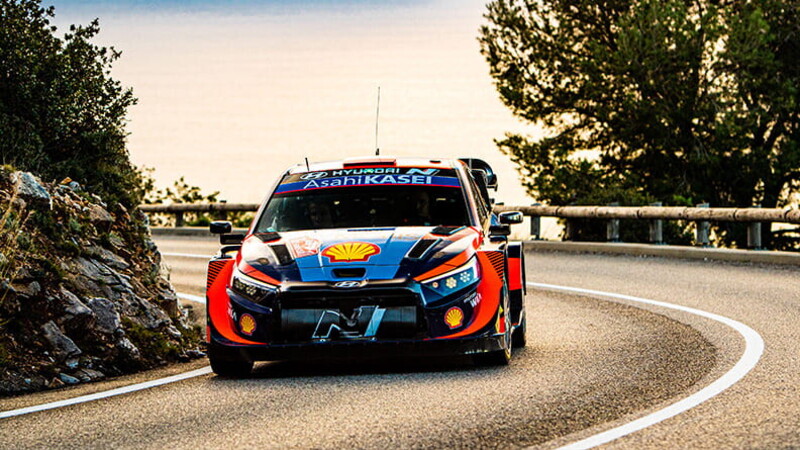Monaco's mountain grand prix

The same…but different
It's easy to look at the World Rally Championship circus heading to Monte Carlo and think that it's business as usual. Newly crowned world champion Kalle Rovanpera is still driving the number 69 Toyota GR Yaris Rally1; spurning the option to run number 1 on his car. His Toyota team-mates are all the same faces from last year: Elfyn Evans, Takamoto Katsuta and, on occasions, eight-time champion Sebastien Ogier.
But look closer and there have been some significant changes elsewhere. Former world champion Ott Tanak has returned ‘home' to M-Sport: the team that brought him into the WRC over a decade ago, after he starred in the Pirelli Star Driver programme. Esapekka Lappi has defected to Hyundai from Toyota, while Craig Breen has headed back to Hyundai after a season at M-Sport.
The cars have undergone some subtle evolutions and the tyres fitted to the trio of Rally1 machines – the Toyota Yaris, the Ford Puma and the Hyundai i20 – aren't entirely the same as 2022 either.
These latest-generation rally cars, introduced last year, put a very high demand on the tyres. With a massive hybrid kick under acceleration, high loads under cornering at speed, and the notoriously rough conditions of the world's most challenging rallies to consider, Pirelli has upgraded its rally tyre constructions further for 2023 to cope with all the WRC's extreme demands. Starting this weekend in Monaco.

The perfect fit
Pirelli's renowned portfolio of rally tyres for all conditions (P Zero for dry asphalt, Cinturato for wet asphalt, Scorpion for gravel, and Sottozero for snow and ice) have all gone through sophisticated yet subtle changes to their construction for maximum durability.
It's easy to argue this wasn't necessary: out of 3500 tyres used last season across 148,000 kilometres on 13 rallies, there were only 41 confirmed punctures. This means that a whopping 98.8% of tyres survived everything the world can throw at them – although, unfortunately, broken wheel rims can sometimes lead to deflations no matter how strong the tyre is. Especially on the fastest cars in the history of the championship.
Either way, Pirelli's engineers have rebalanced the sensitive ratio between robustness and shock absorption. And this is where building a tyre to resist the massive demands of rallying becomes really challenging. If it's too robust, the tyre loses its ability to absorb shocks and dissipate high loads of kinetic energy, forcing them onto the components of the car and the wheel instead. If it's not robust enough, reliability is compromised. Somewhere in the middle, there's a sweet spot. And that is the goal of every tyre engineer.

Evolution of the species
Upgrading the WRC tyres for this year wasn't about starting again: that's what 2022 was for. A hard reset, with an unprecedented journey into an exciting new hybrid era for rallying. The action has been jaw-dropping.
For 2023, the compounds remain the same while the construction is improved. By choosing evolution over revolution, the drivers can bolt the P Zero and Sottozero tyres onto their cars for Rallye Monte-Carlo knowing that the already-solid existing product is good to go out of the box.
“The slight updates on the tyres mean that we can expect the season to unfold without any big surprises,” explains Terenzio Testoni, Pirelli's Rally Activity Manager. “Of course, there are always going to be challenges and unknowns when it comes to managing the increased power and weight of the new hybrid cars, which put the tyres under a lot of stress. But everyone has a year of experience of this now, so it's going to be fascinating to see how everything unfolds.”
And that's probably an understatement. It's genuinely hard to pick a championship favourite for this year.
Snow joke
Something that's equally impossible to predict on Rallye Monte-Carlo is the weather. And while Europe has had an unseasonably warm winter so far (there have been plenty of disappointed skiers) all this is set to change for the Rallye Monte-Carlo weekend, where cold temperatures and a big dump of snow are forecast. If this happens between the recce and the rally, it makes the event even more of a lottery, as the drivers will be using pace notes designed for dry asphalt; their usual reference points obliterated.
In total, there will be 325 competitive kilometres of asphalt, snow and ice, held across four days to put the new construction of P Zero and Sottozero tyres to the test. The only respite will be the service halt on Monaco's famous harbourside.
Business as usual for the drivers, though? Don't count on it. Anyone who is not Rovanpera or Toyota will be aiming for a revolution, not just an evolution, this year. They might just get it. And the whole story starts right now.




